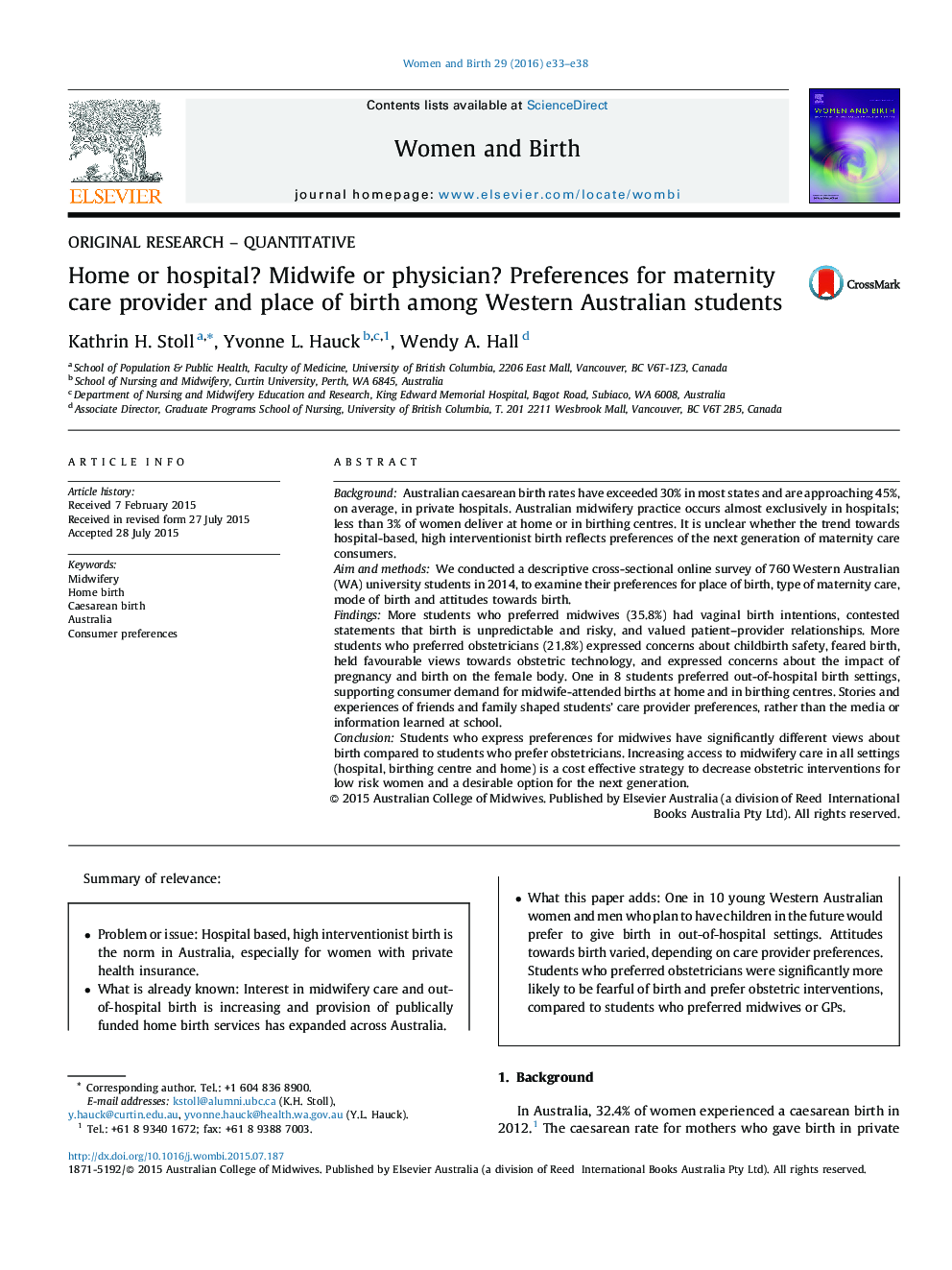| Article ID | Journal | Published Year | Pages | File Type |
|---|---|---|---|---|
| 2636451 | Women and Birth | 2016 | 6 Pages |
BackgroundAustralian caesarean birth rates have exceeded 30% in most states and are approaching 45%, on average, in private hospitals. Australian midwifery practice occurs almost exclusively in hospitals; less than 3% of women deliver at home or in birthing centres. It is unclear whether the trend towards hospital-based, high interventionist birth reflects preferences of the next generation of maternity care consumers.Aim and methodsWe conducted a descriptive cross-sectional online survey of 760 Western Australian (WA) university students in 2014, to examine their preferences for place of birth, type of maternity care, mode of birth and attitudes towards birth.FindingsMore students who preferred midwives (35.8%) had vaginal birth intentions, contested statements that birth is unpredictable and risky, and valued patient–provider relationships. More students who preferred obstetricians (21.8%) expressed concerns about childbirth safety, feared birth, held favourable views towards obstetric technology, and expressed concerns about the impact of pregnancy and birth on the female body. One in 8 students preferred out-of-hospital birth settings, supporting consumer demand for midwife-attended births at home and in birthing centres. Stories and experiences of friends and family shaped students’ care provider preferences, rather than the media or information learned at school.ConclusionStudents who express preferences for midwives have significantly different views about birth compared to students who prefer obstetricians. Increasing access to midwifery care in all settings (hospital, birthing centre and home) is a cost effective strategy to decrease obstetric interventions for low risk women and a desirable option for the next generation.
